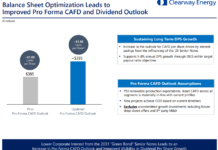Sean Kidney
Toyota Motor Corp. (NYSE:TM) will close mid-next week on what will be the world’s first green bond backed by auto loans – electric vehicle and hybrid car loans to be specific. And what a kickstart for that market, at $1.75 billion.
According to a report in International Financing Review (IFR), the bond will be in multiple tranches, each at a different ratings level: A2 tranche, A3 and A4 (Moody’s ratings).
First thing to know: they told the media a week ago it would be a US$774.675 million bond. Rumour has it that initial investor interest was up to three times that. On Tuesday IFR was reporting that the bond would be $1.25 billion; by yesterday someone had told Bloomberg that it would be $1.75 billion. That’s looking like a very successful bond.
Was it because it was green? I mean, people are going to buy a Toyota bond anyway, aren’t they? Citigroup (NYSE:C), who structured the bond, certainly felt it was worth the extra effort to pick up new investors; but we won’t know details until after close next Wednesday. By the way, co-lead-managers with Citi are Bank of America Merrill Lynch (NYSE:BAC) and Morgan Stanley (NYSE:MS). BNP Paribas, Credit Agricole, JP Morgan and Mizuho are co-managers.
Most “labelled” green bonds (see our explanation of this in our review of green bonds in 2013) have been “asset-linked” corporate green bonds, where the investor has no exposure to the underlying asset.
This is different; the different tranches of the bond are apparently fully backed by the cash flows of the auto loan portfolio – which is great for Toyota because they get they original lending capital back and can plough it into a new pile of loans, which all helps to sell more low-carbon cars).
Asset-backed securities are still relatively new to the “labelled” green bonds theme: Hannon Armstrong (NYSE:HASI) kicked this off with a $100 million bond in December backed by energy efficiency and renewable energy cash flows. (Mind you do there are a few asset-backed renewable energy bonds around that we include in our broader Bonds and Climate reporting, such as MidAmerican’s Topaz, last year’s groundbreaking rooftop solar lease securitization from SolarCity (NASD:SCTY) as green, and 2010′s Italian Andromeda bond).
The size of Toyota’s bond signals the start of a major new stage in the green theme. We think it’s safe to expect more.
Two reasons why this is important:
1. It establishes transport as green for the purposes of bonds issuance. Yes yes yes!
Transport is responsible for 23% of global energy emissions – reducing those emissions is vital. Of course the question is then what really is green. Are hybrids really green or is true that they have higher emissions than diesel cars if you drive them intercity? What about a Hummer hybrid, is that good (yes there was one)? And don’t we want to get everyone out of cars and on to trains instead?
It just so happens we have a Low-Carbon Transport Working Group of international experts in the area tackling these issues at this very moment; all under the Climate Bonds Standard and Taxonomy. We expect to be publishing agreed criteria for low-emission vehicles later in April, along with criteria for metro rail, bus rapid transit systems and the like.
From what little we know so far, the Toyota bond looks like it will meet the criteria currently being discussed; they’ve said cars will “be required to meet standards of energy efficiency in regulations set by the California Environmental Protection Agency’s Air Resources Board“. We’ll know more about exactly what level later next week and whether they’ve had a credible sign off on the green credentials.
2. Asset-backed issuance is incredibly important to getting increased capital into the green investment pipeline.
Being able to issue asset-backed bonds allows banks and companies to sell green loans and assets to the huge pool of investors looking for low-risk bonds and quickly recycle the capital they raise into new investments.
The more easily and quickly they can sell a mature portfolio, the more project investment and lending they can do with a limited amount of capital.
This is a big moment for the green bonds and climate bonds market.
Sean Kidney is Chair of the Climate Bonds Initiative, an “investor-focused” not-for-profit promoting long-term debt models to fund a rapid, global transition to a low-carbon economy.








